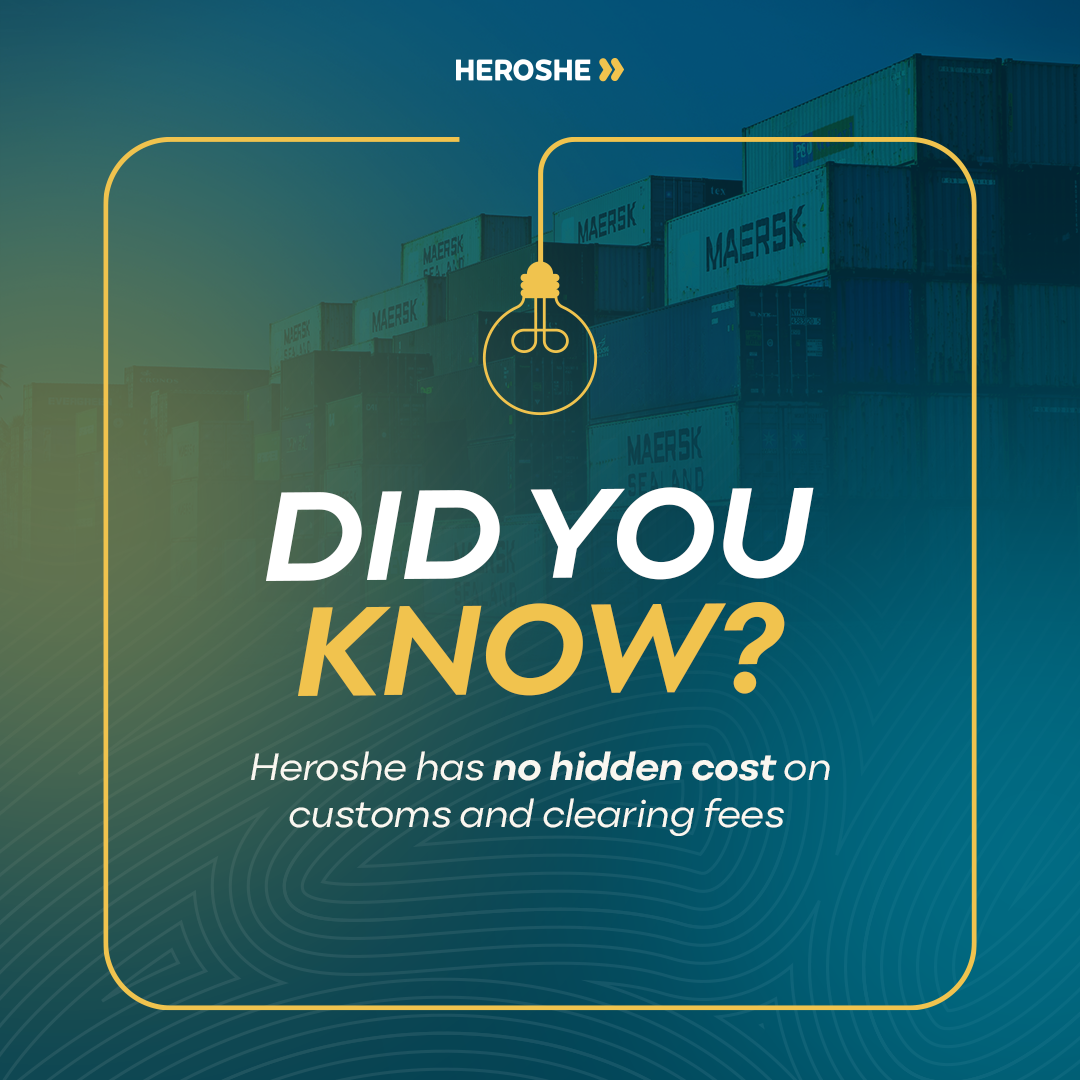The Impact of Technology on Last-Mile Delivery: Enhancing Customer Experience

According to a recent report by Statista, the global e-commerce market is expected to reach $8.1 trillion by 2026, representing a 56% annual growth over the next few years. This explosive growth has fueled a 200% increase in the demand for efficient and timely deliveries of online orders to customers. As a result, last-mile delivery has become an essential part of the customer shopping experience which cannot be overlooked.
Last-mile delivery is the final stage of the e-commerce supply chain, where goods are transported from a transportation hub or warehouse to the customer's destination. This is an important stage in the supply chain as it determines the success or failure of the business.
Delivering products quickly, accurately, and efficiently is needed to build customer trust, loyalty, and satisfaction. This translates to more sales and revenue generating opportunities for businesses, which helps them push boundaries and remain relevant in their industry.

Challenges Associated with Last-Mile Delivery
Some common challenges associated with last-mile delivery include:
Costs:
Last-mile delivery is expensive and can take up to 41% - 52% of the total supply chain cost. These costs are driven by fuel, labour, vehicle maintenance, and increasing traffic congestion in urban areas.
Traffic Congestion:
Traffic congestion is a major challenge for last-mile delivery, particularly in urban areas. Congestion can lead to delays, missed deliveries, and increased fuel consumption, ultimately driving up costs and reducing customer satisfaction.
Failed Delivery and Lost Packages:
Delivery failures and lost packages can cause frustration for customers and damage the brand's reputation. Failed deliveries, lost packages, and inaccurate tracking information can lead to customer dissatisfaction, negative reviews, and a decline in customer loyalty.
NB: Failed deliveries happen when a customer is not home to receive their order, which drives up costs for both the customer and the company delivering the order.
Customer Expectations:
Customer expectations for last-mile delivery are at an all-time high. Customers demand fast, accurate, and convenient deliveries, often with real-time tracking and flexible delivery options. Meeting these expectations can be challenging, especially during peak seasons or in remote areas.
Impact of Technology on Customer Experience
Technology has highly impacted customer experience, especially in delivery services. Here are several ways in which technology has improved the overall customer experience:
Improved efficiency and speed in delivery:
The advancements in technology, as seen worldwide, have enabled businesses to streamline their delivery processes, resulting in faster and more efficient deliveries. For instance, route optimisation software allows delivery personnel to plan the most efficient routes, reducing delivery times and enhancing overall efficiency. Additionally, automated sorting and packaging systems ensure quicker processing of orders, enabling faster deliveries.
Enhanced visibility and tracking for customers:
The modern customer always wants to track their delivery's progress as it gives them more control over the delivery process while reducing anxiety. Technology makes this possible by giving customers real-time visibility and tracking their orders. Online dashboards, portals and mobile apps can help customers track the delivery of their orders. This can also reduce missed deliveries as the customer is aware that delivery will be coming in, and he has to be available to receive it.
Personalisation and Customisation of Delivery Options:
One of the greatest impacts of technology on the e-commerce space is how it allows companies to offer a more personalised and customised delivery experience. This is seen in how customers can choose delivery days and time slots, delivery locations and specific delivery instructions. This level of customisation ensures convenience and flexibility for customers, leading to higher satisfaction.
Reduction in Delivery Costs and Environmental Impact:
With technological advancements like route optimisation, companies can now plan their delivery routes. This includes utilising data analysis and algorithms to minimise the distance travelled and avoid traffic congestion, reducing delivery costs.
Technological Advancements Transforming Last-Mile Delivery
Technology has done a great job transforming last-mile delivery, improving efficiency, enhancing customer experience, and enabling businesses to meet rising customer expectations.
Here are several ways in which technology is transforming last-mile delivery:
Real-time tracking and proactive communication:
Real-time tracking through GPS and live order updates gives customers visibility into their deliveries. Customers can track the location of their packages in real-time, ensuring transparency and reducing uncertainty.
Additionally, personalised notifications and proactive issue resolution foster trust by informing customers about delays or issues and providing timely solutions. This proactive communication reduces customer anxiety and enhances overall satisfaction.
Route optimisation and delivery efficiency:
Route optimisation algorithms powered by artificial intelligence (AI) contribute to last-mile delivery efficiency. These algorithms analyse traffic patterns, road conditions, and delivery schedules to determine the most efficient routes for delivery vehicles. This approach minimises fuel consumption, reduces travel time, and optimises resource allocation, which helps to save costs.
Automated delivery and contactless solutions for enhanced flexibility and convenience:
Self-service delivery lockers, automated drop boxes, and contactless delivery options are transforming how customers receive their orders. These solutions provide flexibility and convenience, allowing customers to pick up their packages at leisure or opt for contactless delivery to minimise contact and enhance safety.
Automated delivery solutions cater to individual customer needs, particularly during busy times or areas with restricted access. For instance, self-service lockers can be placed in convenient locations, such as apartment buildings or office lobbies, providing 24/7 access for customers. Contactless delivery options, such as doorstep drop-offs, offer added convenience and safety.
Personalised delivery preferences and flexible options:
Customer-centric delivery scheduling, location-based delivery options, and personalised delivery preferences customisation empower customers to choose their preferred delivery times and locations. This customisation enhances customer satisfaction and ensures a more personalised delivery experience. By catering to individual customer needs and preferences, businesses can create a positive and memorable delivery experience, strengthening customer loyalty and generating repeat business.
Data-driven insights and continuous improvement:
Data collection and analysis enable businesses to identify patterns and trends in last-mile delivery. This data-driven approach provides insights into areas for improvement and optimisation. Businesses can optimise delivery processes, reduce costs, and improve customer satisfaction by leveraging data insights. Continuous evaluation and improvement of last-mile delivery strategies allow companies to stay ahead of the curve and meet evolving customer expectations.
Future Trends and Possibilities of Last-Mile Delivery
The future of last-mile delivery is poised to be transformed by technological advancements, sustainability, and changing customer expectations. This transformative journey will reshape how goods are delivered, enhancing efficiency, convenience, and sustainability.
Potential Innovations Shaping the Future of Last-Mile Delivery
Technology is constantly evolving, and some innovations poised to shape the future of last-mile delivery includes:
Autonomous Vehicles and Drones:
Autonomous vehicles and drones hold immense potential for last-mile delivery, particularly in urban areas. These technologies can navigate congested city streets, reach remote locations, and deliver goods efficiently, reducing human error and environmental impact.
Hyperlocal Delivery:
Hyperlocal delivery focuses on delivering goods from locations closer to the customer. This approach reduces delivery times, optimises transportation costs, and supports local businesses.
Predictive Delivery:
Predictive analytics will be crucial in anticipating customer needs and optimising delivery routes. By analysing historical data, current trends, and weather conditions, predictive delivery can ensure timely deliveries and resource allocation.
Integration of Emerging Technologies
Artificial Intelligence (AI):
AI will power various aspects of last-mile delivery, including route optimisation, demand forecasting, and fraud detection. AI algorithms can analyse vast amounts of data to identify patterns, optimise processes, and make informed decisions.
Internet of Things (IoT):
IoT-enabled devices can provide real-time data on the location, condition, and movement of packages, enabling proactive monitoring and issue resolution. IoT sensors can also optimise delivery routes and warehouse operations.
Sustainability and Eco-friendly Solutions
The Earth is our home, and it is our duty to preserve it. this means embracing eco-friendly solutions in last-mile delivery. Some of these solutions includes:
Electric Vehicles (EVs):
Adopting electric vehicles (EVs) in last-mile delivery will significantly reduce carbon emissions and mitigate environmental impact. EVs offer cleaner and more sustainable transportation options for urban deliveries.
Sustainable Packaging:
Sustainable packaging materials, such as recycled and compostable materials, will become increasingly frequent. This shift will reduce waste, promote environmental responsibility, and enhance brand image.
Eco-friendly Delivery Practices:
Businesses will implement eco-friendly delivery practices, such as route optimisation to reduce fuel consumption, consolidation of deliveries, and strategic partnerships with local delivery providers.
N.B: Consolidation of deliveries happens when a company combines several small orders into one container to save costs. These deliveries usually take the same route, and the delivery personnel gets to deliver the orders to one person at a time.
Related: Everything You Need to Know About Bulk Shipping
Anticipated Challenges and Strategies for Overcoming Them
Like everything else, last-mile delivery has its own challenges especially as it involves integrating technological advancement.
Regulations:
Integrating autonomous vehicles and drones will require clear regulatory frameworks and infrastructure development. Businesses should collaborate with policymakers to address regulatory concerns and ensure smooth adoption.
Customer Acceptance:
Gaining customer acceptance for new delivery technologies, such as autonomous vehicles and drones, may require education and trust-building initiatives. To foster trust, businesses should focus on transparency, safety protocols, and customer privacy.
Infrastructure Challenges:
Implementing sustainable practices may require investment in charging stations for electric vehicles and the development of eco-friendly packaging solutions. Businesses should collaborate with industry partners and policymakers to address infrastructure challenges.
Conclusion
Technology is changing last-mile delivery, transforming it from a logistics challenge into a customer-centric experience. Real-time tracking, route optimisation, automated delivery solutions, personalised delivery options, and data-driven insights contribute to efficiency, transparency, and customer satisfaction.
As technology continues to evolve, the future of last-mile delivery holds even greater promise. Autonomous vehicles, drones, and hyperlocal delivery models will reshape how goods are delivered, while AI and IoT will further optimise processes and enhance customer experiences.
Businesses that embrace these technological advancements and adopt sustainable practices will be well-positioned to thrive in the dynamic e-commerce landscape, delivering exceptional customer experiences and achieving operational excellence.
Subscribe to the Heroshe blog to stay informed about the latest trends in the logistics industry.

